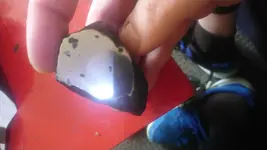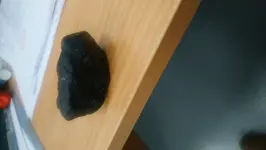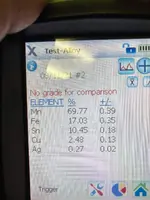Thank you for your reply Red Coat !!! What else could it be


do you know a place in the uk where can I get it tested?
Sorry, I only just noticed that you had responded again.
I hadn’t realised that you are in the UK… do I read you correctly? Was this specimen actually found in the UK? If so, that considerably narrows down the possibilities for anything natural. The only likely possibilities for something as metallic as your specimen where the metal could (rarely) be in native form would be lead, tin, silver or combinations thereof in admixture with other minerals. I don’t see any yellowness, so admixture with copper isn’t likely. All of these would be relatively soft and give distinctive streaks on the back of a porcelain tile.
It also appears that you have cut or ground one surface yourself(?). What you used to achieve this and with what degree of difficulty will also give an indication of what kind of metal/alloy it might be. As will the locality where you originally found it. You haven’t given any of this information.
If it’s a man-made smelting product (including the possibility for it being historic) then there’s a wider set of possibilities and wider still if it’s a piece of something from a modern industrial process.
You might try ringing around scrap merchants in your area to see if anyone has an XRF gun and will scan it for you. That would at least give you some pointers from its proximate composition.
Proper ‘wet-chemistry’ analysis from a laboratory will give you an exact composition, but will cost you and probably won’t do much more than satisfy your curiosity about the composition but without necessarily telling you its origin.
You could also mail some good, sharp pictures to the Natural History Museum identification service at
ias2@nhm.ac.uk
Don’t snowstorm them with pictures but make sure to show the exterior and interior (in close-up too if possible), and give them as much information as you can… as a concise summary. Magnetic strength, streak result, hardness, XRF scan if you can get it done, find location.
Good luck.








